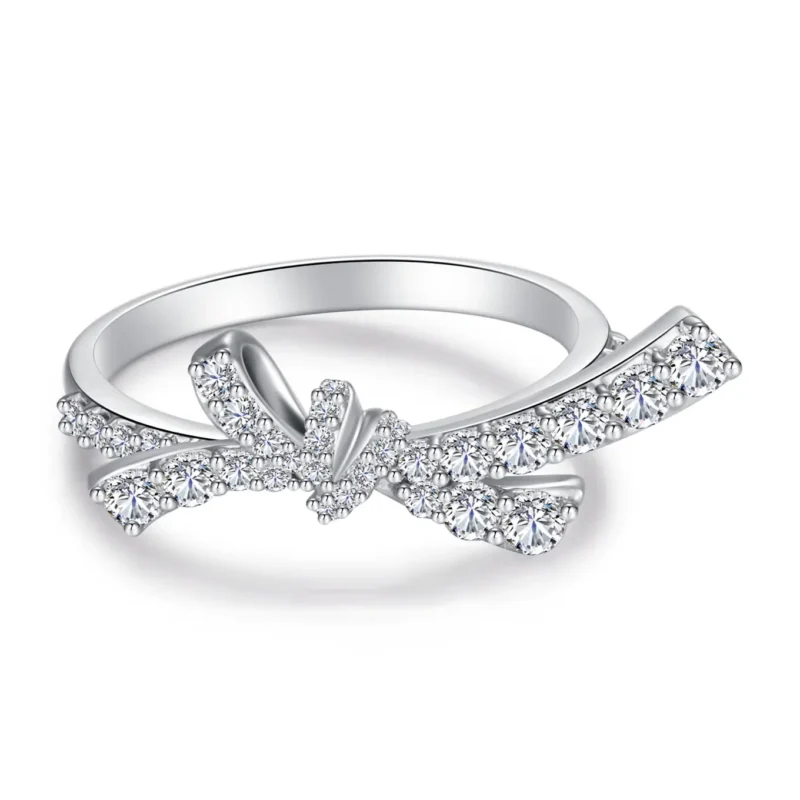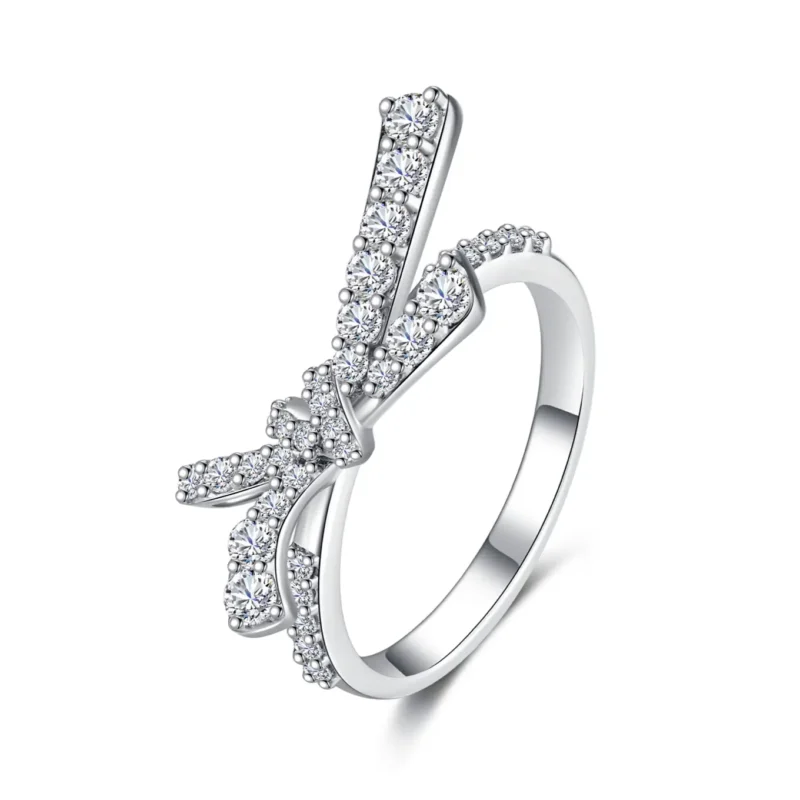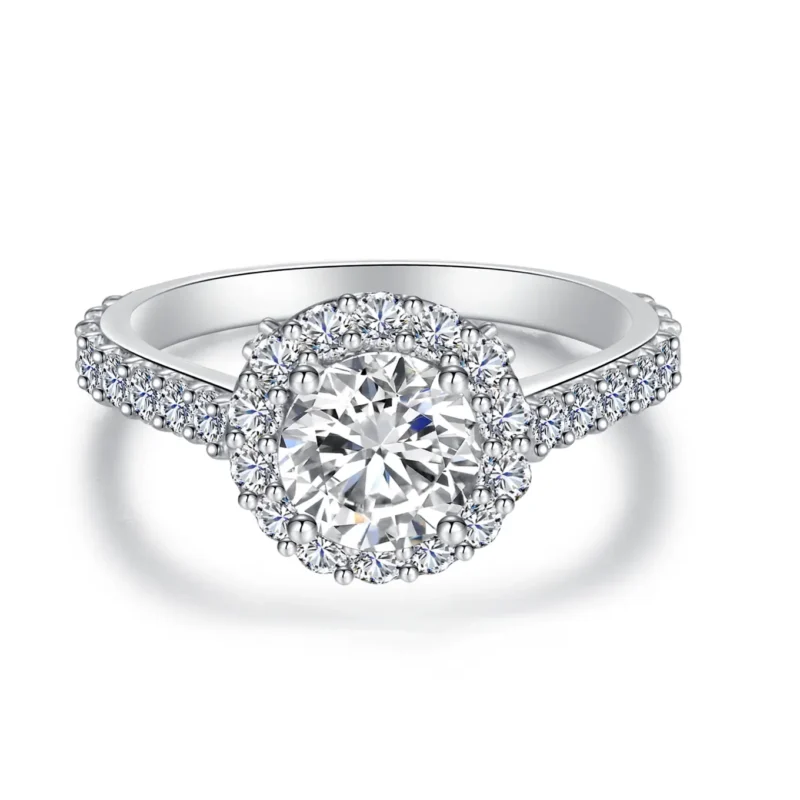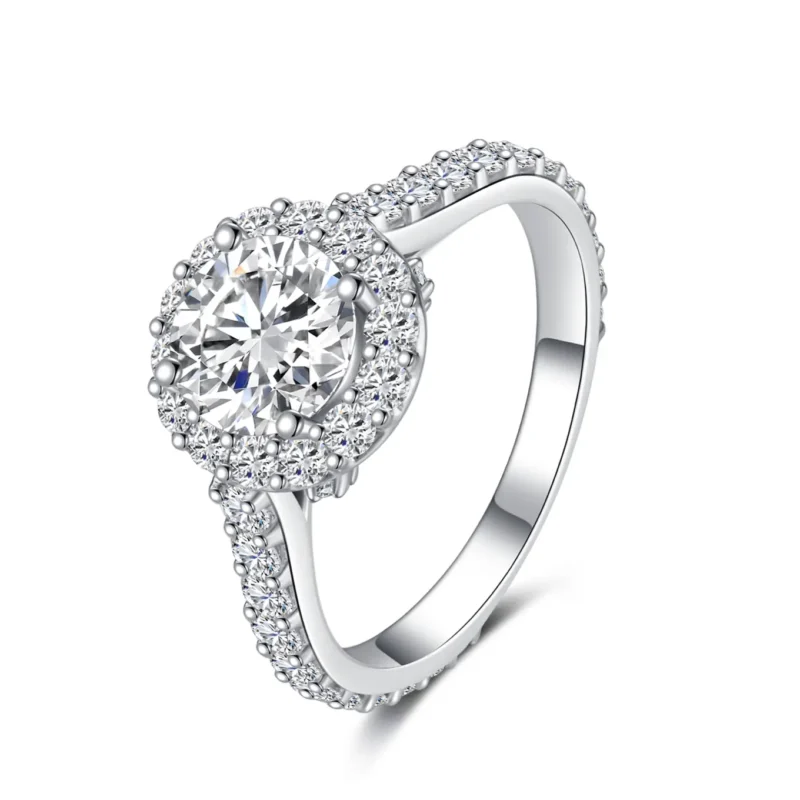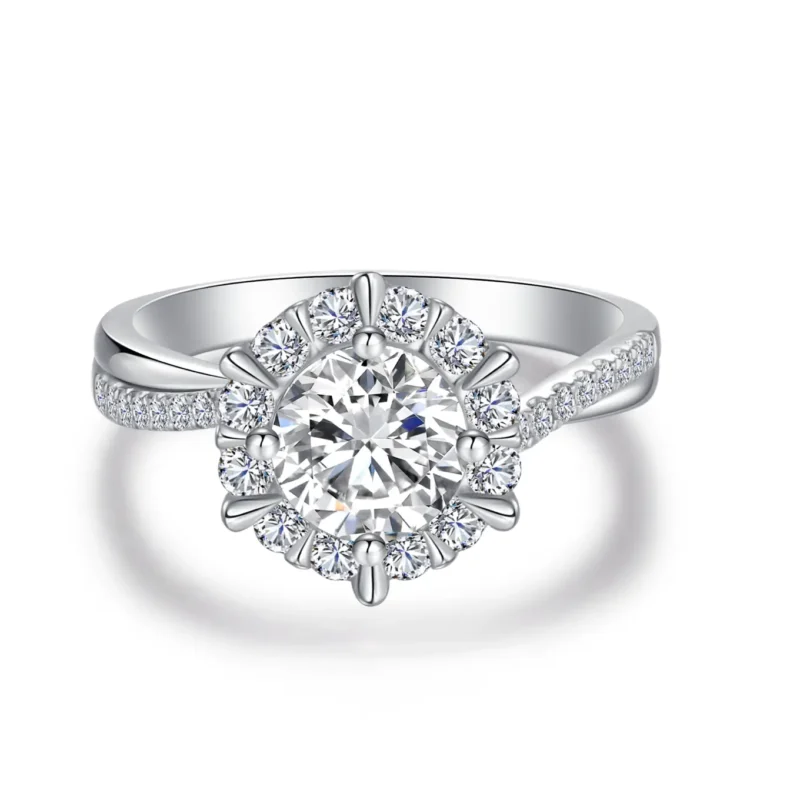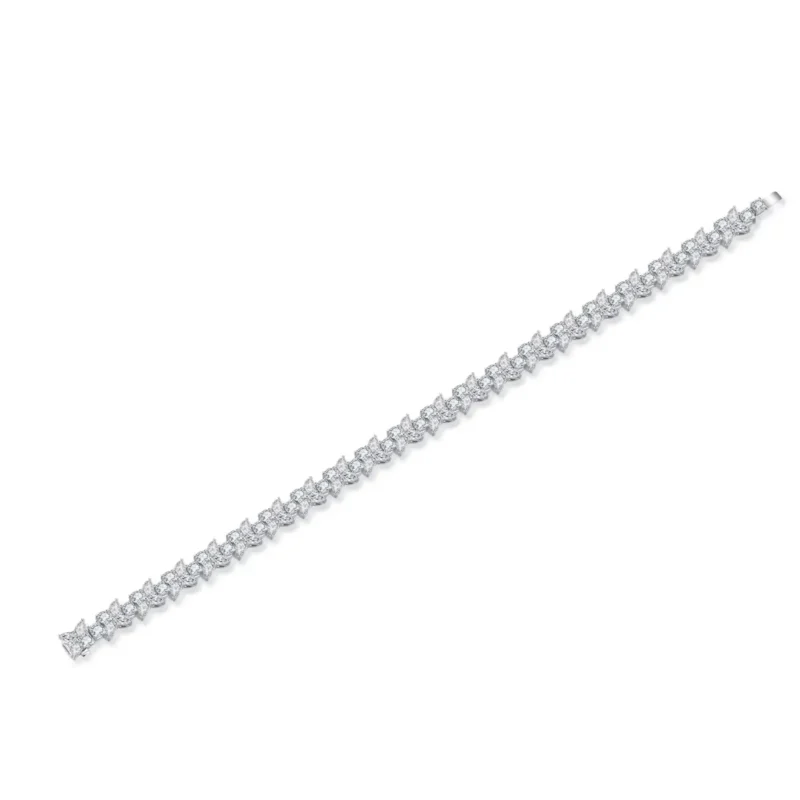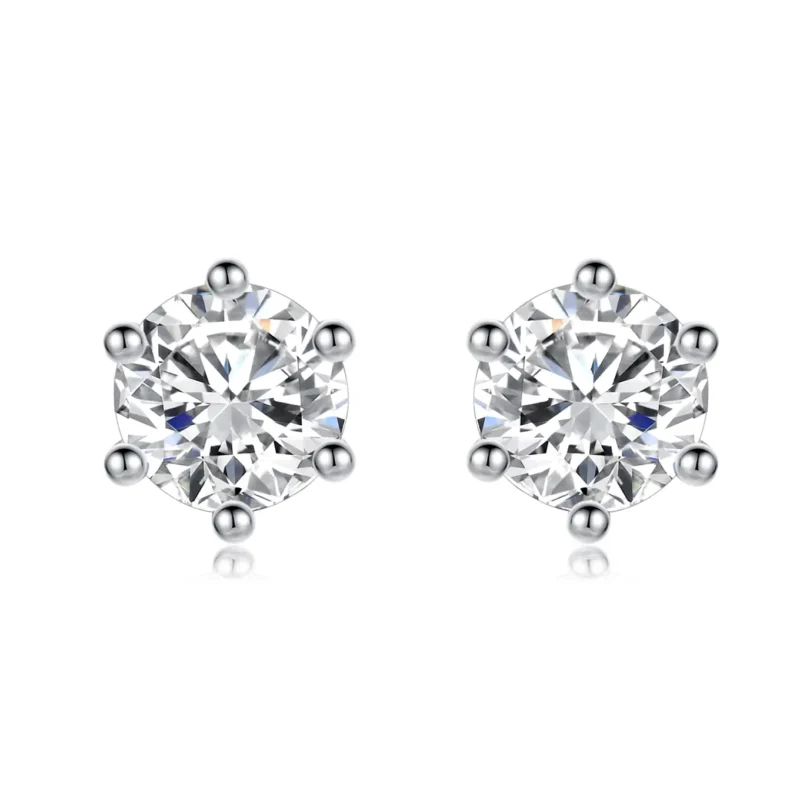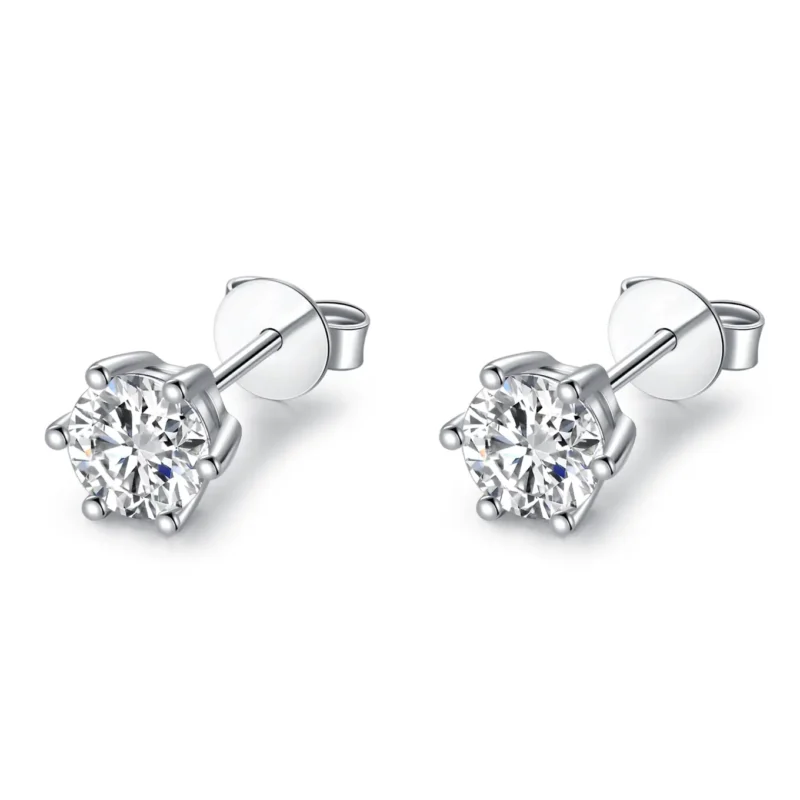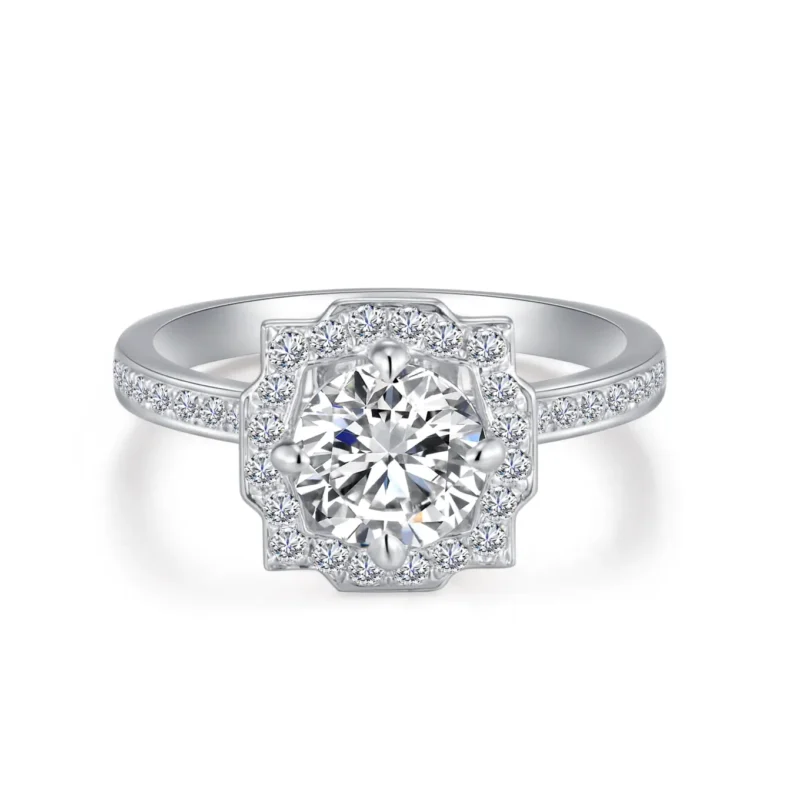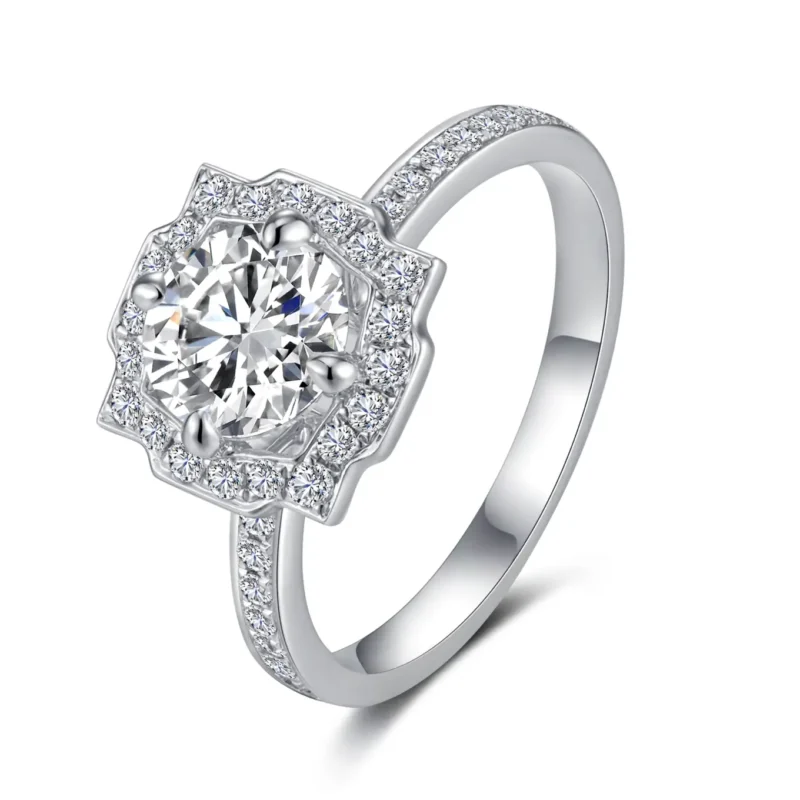Asscher shape diamonds celebrated for their mesmerizing step cuts and vintage charm. A geometric masterpiece of understated glamour and depth.
Free customized gift card
Lifetime resizing
Free engraving
Customized stone size
HELPFUL INSIGHTS
What is Asscher Shape Diamonds
The Asscher cut diamond is like stepping into a kaleidoscope of light—a masterpiece of symmetry and vintage allure. Invented in 1902 by Joseph Asscher, this iconic shape was originally dubbed the “Royal Asscher” after becoming a favorite of European royalty. Its defining features include a square shape with cropped corners, a high crown, and a pavilion lined with concentric step facets that create a mesmerizing “hall of mirrors” effect. Unlike modern cuts that prioritize fiery brilliance, the Asscher emphasizes depth and clarity, drawing the eye into its geometric precision.
What makes the Asscher truly special is its rarity. Crafting this cut demands exceptional skill—each facet must align perfectly to achieve its signature hypnotic glow. Fewer than 1% of diamonds are cut as Asschers, making them a treasure for collectors. The design also cleverly conceals inclusions, thanks to its layered facets, which means you can often opt for a lower clarity grade without compromising beauty.
Popularized during the Art Deco era, Asscher diamonds evoke old Hollywood glamour (think Elizabeth Taylor’s legendary jewels) while remaining timelessly modern. Whether set in a solitaire engagement ring or a vintage-inspired pendant, this cut bridges the gap between architectural boldness and understated elegance, perfect for those who crave a diamond that tells a story.
Why Choose Asscher Shape Diamonds
1. Timeless Art Deco Appeal: The Asscher’s clean lines and stepped facets mirror the geometric precision of the 1920s, making it a wearable piece of history. Its vintage charm pairs seamlessly with both heirloom designs and contemporary settings.
2. Unmatched Depth & Dimension: Unlike shallow cuts, the Asscher’s deep pavilion creates a captivating “endless hallway” effect. Light reflects inward, producing a soft, chandelier-like sparkle rather than scattered flashes—ideal for lovers of subtle luxury.
3. Flattering Versatility: The square shape elongates fingers in rings and complements all hand sizes. Its cropped corners add softness, making it more wearable than sharp-edged princess cuts.
4. Rarity & Exclusivity: Few jewelers master the Asscher’s complex cut, and fewer diamonds are shaped this way. Choosing one ensures your jewelry stands out in a sea of common rounds or ovals.
5. Smart Value: Asschers often cost less per carat than round brilliants, and their facets hide inclusions better, letting you prioritize size or color without overspending on clarity.
6. Durability: The cropped corners protect against chipping, making it a practical choice for everyday wear.
Asscher Shape Diamonds VS Other Shapes
Asscher vs. Emerald Cut:
Both share the elegance of step facets, but the Asscher dials up the drama. Emerald cuts have a larger table (top surface) and shallower pavilion, creating a "hallway" effect with broad flashes of light. Asschers, with their smaller table and higher crown, reflect light inward, producing a deeper, almost kaleidoscopic sparkle. Emerald cuts lean minimalist and modern, while Asschers feel vintage and intricate—ideal for Art Deco lovers.
Asscher vs. Round Brilliant:
Round brilliants are the classic crowd-pleasers with 58 facets designed for maximum fire and sparkle. Asschers, however, trade that fiery brilliance for a subtler, hypnotic glow. Think of rounds as a fireworks display and Asschers as candlelit chandeliers—both stunning, but the latter whispers sophistication. Rounds suit traditionalists; Asschers appeal to those who crave a diamond that sparks curiosity.
Asscher vs. Princess Cut:
Princess cuts are the edgy younger sibling: sharp corners, modern angles, and a flashy vibe. Asschers soften those edges with cropped corners, creating a retro feel that’s easier to wear daily. Princess cuts prioritize sparkle over depth, while Asschers emphasize geometric precision and storytelling (thanks to their layered facets).
Asscher vs. Cushion Cut:
Cushion cuts blend rounded edges with a pillowy shape, radiating a romantic, soft glow. Asschers counter with crisp lines and structured symmetry—they’re the architectural marvels of the diamond world. Cushions feel dreamy; Asschers feel deliberate and bold.
Asscher vs. Oval Cut:
Ovals are elongating and trendy, with a brilliant-cut sparkle that flatters fingers. Asschers, though square, create a similar elongating effect but with vintage flair. Ovals scream "modern romance," while Asschers whisper "timeless heirloom."
Asscher vs. Radiant Cut:
Radiant cuts mix step and brilliant facets for a hybrid sparkle. They’re rectangular with trimmed corners, offering flashy versatility. Asschers stay true to their square roots, focusing on symmetry and depth over sheer brilliance. Radiants shout "glamour"; Asschers command quiet confidence.
Why Asschers Win:
No other shape balances vintage charm and modern geometry like the Asscher. Its cropped corners protect against chips (unlike sharp princesses), its layered facets hide inclusions better than emeralds, and its rarity ensures you’re not wearing the same diamond as everyone else. While rounds and ovals dominate trends, the Asscher is for those who value storytelling, craftsmanship, and a touch of old-world mystery in their jewelry.
How to Choose the Best
1. Prioritize Cut Quality: The Asscher’s magic lies in its symmetry. Look for grades of “Excellent” or “Very Good” from GIA/AGS. Misaligned facets disrupt its hall-of-mirrors effect—ask for magnified videos to inspect light performance.
2. Color Flexibility: The cut’s depth masks color tints. Opt for G-H grades (near-colorless) to save budget without sacrificing visual appeal.
3. Clarity Sweet Spot: Aim for VS2-SI1 clarity. The layered facets hide inclusions better than most cuts, so you don’t need flawless grades.
4. Size Smartly: Asschers face up smaller than rounds. A 1.5-carat Asscher may look like a 1.2-carat round. Pair with tapered baguettes or halos to enhance perceived size.
5. Certification Matters: Always choose GIA or AGS-certified stones. These labs grade Asschers rigorously for cut and symmetry.
6. Setting Strategy: Bezels or four-prong settings secure the corners, while vintage-inspired filigree bands lean into its Art Deco roots.
Pro Tip: Work with jewelers who specialize in step cuts—they’ll know how to source diamonds with optimal light return for this unique shape.
FAQ
Are Asscher diamonds more expensive than round?
Often no! Their lower demand can mean better prices per carat compared to rounds.
Do Asschers sparkle less than brilliant cuts?
They sparkle differently—think “chandelier shimmer” vs. “fireworks.”
Is the Asscher cut durable?
Yes! Its cropped corners protect against chipping.
What’s the best setting for an Asscher engagement ring?
Halo settings amplify size; solitaires highlight its geometric purity.
Can I customize an Asscher diamond design at GLARINS?
Absolutely! We offer bespoke settings to match your vision.








